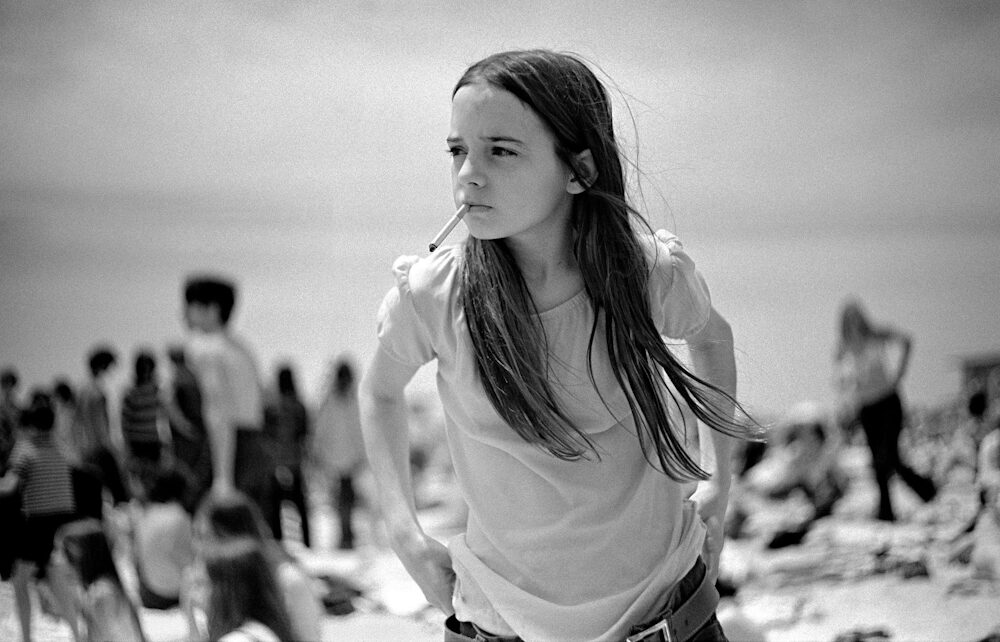Our secret buyer on collecting photographs.

Silver Gelatin Print, signed and numbered limited
edition of 75. It was first exhibited at Crane Kalman
in 2005, price £950. Now sold out, on the secondary
market the asking price is between £12,000-£15,000
In his 1967 essay Understanding a Photograph the artist, writer and critic John Berger argued that ‘it now seems clear that photography deserves to be considered as though it were not a fine art’ [my italics]. Fine art such as painting and sculpture was dying. It had degenerated into valuable ‘property’, isolated and moribund in museums and the homes of the rich. Photographs by contrast ‘have little or no property value because they have no rarity value.’
In March this year, in Phillips auction house in New York, William Eggerston’s photograph of a tricycle in Memphis, made in 1970, was sold for $508,000. At the same sale his 1965 picture of a boy working in a supermarket, pushing a cart, went for $215,000. In 2012 Christie’s sold his untitled picture of a cocktail glass on a table by the window, high above the clouds, in an aeroplane, the drinker’s hand stirring it with a straw. The price was a mere $1,441,500. These prints are now rare because the coloured dyes used in their production are no longer available. Their investment value has soared.
We do not know how Berger would have handled this. He admired photography for its own sake, but his taste was narrow. He liked photographs which captured an event, agonising or joyful, occurring in an instant of time. He extolled Don McCullin’s war photographs taken on the battlefield of Vietnam, preserving in perpetuity the immediacy of an unrepeatable act. The medium was, in Berger’s view, betrayed by ‘absurd studio works in which the photographer arranges every detail of his subject before he takes the picture.’
For an alternative view I consulted Richard Kalman of Crane Kalman Brighton (CKB), a specialist dealer in high quality photographic prints. The lure of photographs in his extensive experience of collectors is not limited to any one category. Photographs can of course record, in a split second, an event in history, or a unique private and personal moment, in a way which other media would struggle to emulate (though there are exceptions, such as the firing squad in Goya’s The Third of May 1808). But carefully composed works can have the same impact. On the large scale, if Leni Riefenstahl’s brilliant record of the meticulously staged Nazi rallies is not to your taste, switch over to the photographic record of Donald Trump’s MAGA rallies, where the staging is almost identical and the theatrical effect much the same. Or, on the small scale, there is that cocktail on the table by the aeroplane window.
But, as Kalman points out, this is not the only thing which photography can do. Different features appeal to different collectors. If there is one connecting link it is the special way in which the photograph can persuade you that you are actually there yourself – inside that wonderful landscape, sitting next to, strolling alongside or confronting that subject, being part of that group. It may stir memory: you once visited that town, played in a street like that, marched with demonstrators, sat on that beach. What is special about that house? Would you like to live there, or never dream of it? Photographs envelop your thoughts, drawing and binding you into the image. They may shock, horrify, calm or please you. There is no room for a neutral response.
A prime marketplace for collectors is a gallery’s online viewing room. The medium lends itself particularly well to on-screen viewing. Anna Luk, working at the Photographers’ Gallery in London’s West End, in their Print Sales Gallery (PSG), explains that while the PSG holds physical portfolios of prints made by their represented artists for collectors to browse and inspect, the online service is a major force in an expanding market. The works on the PSG’s site are highly organised: categories include their represented artists; works divided into groups such as classic, portrait, black and white, and abstract; and works showing in current special exhibitions. The diversity is as great as the demographic of their collectors. Except in the case of renowned international artists, such as Sebastião Salgado or Fouad Elkoury, the PSG also shows its prices, demonstrating how much work of high quality is accessible to collectors. Many masterpieces are available between £600 and £3,000. (You can collect your Eggerston in due course.)
Richard Kalman has the same message. Special exhibitions and art fairs still generate great interest, but there is only so much that can be shown there. CKB’s own viewing room again illustrates the diversity of expression to be found in this medium. It is another destination for the experienced and prospective collector. CKB does not show its prices, but you will find that they compete well with the Photographers’ Gallery’s PSG. Follow-up meetings can be arranged for specific information, and advice on building and caring for a collection.
If you want to start collecting, go to the PSG’s site. Its Guide to Collecting Photography echoes advice often found in this column: plan, think, strategise, consult. What can you afford and what are you aiming at? The Guide also has essential advice on framing, glazing, hanging and protecting works in this sensitive, important and increasingly popular medium.

